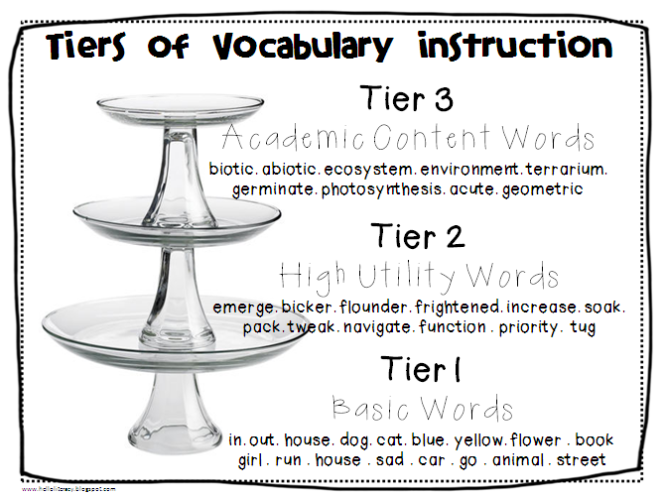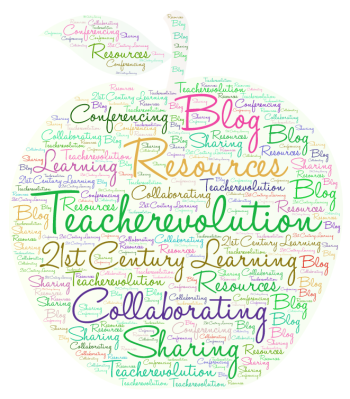A couple years ago, as a Special Education Program Leader I attended a professional development session with our board speech pathologists about the importance of vocabulary and the challenges of acquisition for special education students, especially those with LD’s. I was all ears, and what I learned was (in my opinion) shocking.
First of all, research seems to point that the ‘learning gap’ is actually a ‘vocabulary gap’, and that the vocabulary gap is created by two major factors: socioeconomics and learning disabilities. I also learned that ‘vocabulary deficits’ begin when students enter school and only expand from there on out if there are not significant literacy interventions put in place. In my mind, this explains why students who fail grade 3 EQAO tests often never achieve level 3’s or 4’s in grade 6, 9 or 10 – they’re simply working behind; too far behind to catch up.
I’ve recently created a document for my colleagues on compelling vocabulary research to help them understand why I’ve been harping about this for so long. Here are a couple highlights:
- “Many research studies show that vocabulary is the best single indicator of intellectual ability and an accurate predictor of success in school.” (Elley, W. B. 1988)
- “Ryder and Graves (1984) contend that a lack of vocabulary is one of the reasons for failure in school. In addition to this, Stahl and Fairbanks (1986) report that students who have a wide vocabulary knowledge, get higher grades than students who have a lack vocabulary.
- There is a strong and positive correlation between the volume and depth of a student’s working academic vocabulary and later success in school and eventual educational attainment; there is a strong and positive correlation between an adult’s educational attainment and their annual income potential. (Seyfer, “Words Determine a Child’s Future”)
- Words are usually learned only after they appear several times. In fact, researchers estimate that it could take as many as 17 exposures for a student to learn a new word.(Kamil, M. L., Borman, G. D., Dole, J., Kral, C. C., Salinger, T., and Torgesen, J., 2008)
- Parents should know how their child learns the skills and concepts of language and vocabulary acquisition; the home-based applications can and should be just as designed and thought out as the school-based. (Marzano, Building Academic Vocabulary)
Scary, right? Who knew words were so important; that without adequate knowledge of them our students would be set up for a lifetime of setbacks in terms of education which we know in turn results in challenges related to: employment, finances, relationships and even lifespan.
Tier 2 Vocabulary MOST Important of the Vocabulary Tiers
Of the three vocabulary tiers (see below), I also learned that ‘tier 2’ words are the mothership. These are the high-frequency academic words that students need to be able to understand and use to navigate the world of secondary and post-secondary academics. This is also the tier of words that make up the ‘vocabulary gap’.

How Tier 2 Vocabulary is Acquired for Students with ‘Vocabulary Gaps’
So, what now? What do we, as high school educators do with our students who have significant vocabulary deficits? How can we close the gaps to give them a chance at having a successful secondary and post secondary educational career?
I don’t have all the answers, but I do have some ideas: get them to read, and create a school wide vocabulary initiative.
My English students have taken part in guided Independent Reading Programs for years now, and I have seen the fruits of our labour. Not only are their vocabularies improving, but so is their reading stamina and focus. Other teachers have also adopted this program in their classrooms, so reading is thriving at L.D.S.S.
A school wide vocabulary initiative is something new we’re trying this semester. I’ve created a document to support parents, teachers and students in learning 1 new tier 2 vocabulary word a day via multiple ‘word exposures’.
Essentially, we will have a ‘tier 2’ word of the day each day and it’s my hope that teachers, parents and administrators use this word in a variety of ways throughout the day to give our students as many exposures as possible. To make this work, we’ll need the collaboration of many educational stake holders, but I’m optimistic! I’ve already created a document with an entire semester of words, strategies for word exposures for students/parents/teachers, as well as word searches, quizzes, and crosswords.
Although we are a 7-12 school, the success of this endeavour is going to focus on our 7-10 students who will take Google Form quizzes at the beginning and end of each month to gauge their (our) success in supporting their acquisition of tier 2 vocabulary.
Interested in my resources? If you are a teacher in my board, just pop me an email and I’ll share some ideas via Google Suite. If not, check out my TpT store, as the entire document is available there: Tier 2 Words of the Day: Whole School Program
What do you do to increase the tier 2 vocabulary of your students? Have you found any success? Comment below with your experience. Also, watch for my follow up blog regarding the success of this program in June. Fingers crossed we make some gains!

Although I’ve been aware of huge difference caused by reading in early years, I hadn’t seen data about vocabulary like this. Thanks for sharing your school program. My school (K-6) is in desperate need of something like that. I can’t wait to read about your results at the end of the school year.
LikeLike
Isn’t it shocking? I’m really hoping we can make some gains. Stay tuned;)
LikeLike
I love this! My SMART goal for the year is around vocabulary. This is the first time I’ve chosen to focus on vocabulary because I was concerned about students constantly saying, “but I don’t know what that word means” at the beginning if the year.
LikeLike
Glad you enjoyed the blog. Stay tuned too see how my word exposure program works this semester!!! Fingers crossed!!
LikeLiked by 1 person